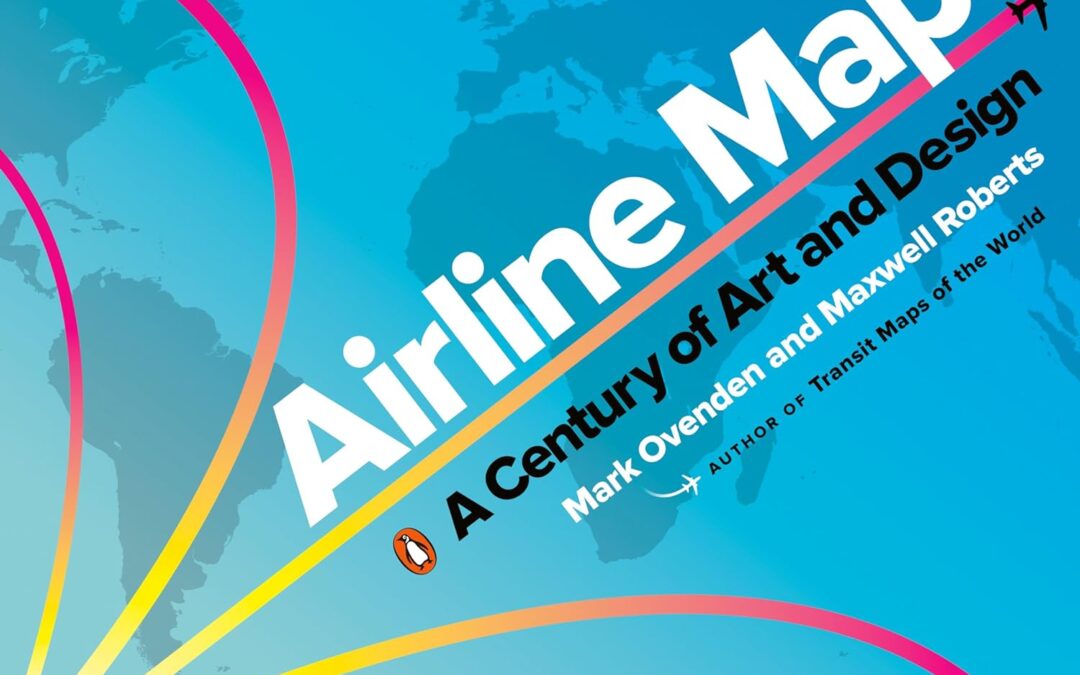
A nostalgic and celebratory look back at one hundred years of passenger flight, featuring full-color reproductions of route maps and posters from the world’s most iconic airlines, from the author of bestselling cult classic Transit Maps of the World.
In this gorgeously illustrated collection of airline route maps, Mark Ovenden and Maxwell Roberts look to the skies and transport readers to another time. Hundreds of images span a century of passenger flight, from the rudimentary trajectory of routes to the most intricately detailed birds-eye views of the land to be flown over. Advertisements for the first scheduled commercial passenger flights featured only a few destinations, with stunning views of the countryside and graphics of biplanes. As aviation took off, speed and mileage were trumpeted on bold posters featuring busy routes. Major airlines produced highly stylized illustrations of their global presence, establishing now-classic brands. With trendy and forward-looking designs, cartographers celebrated the coming together of different cultures and made the earth look ever smaller.
Eventually, fleets got bigger and routes multiplied, and graphic designers have found creative new ways to display huge amounts of information. Airline hubs bring their own cultural mark and advertise their plentiful destination options. Innovative maps depict our busy world with webs of overlapping routes and networks of low-cost city-to-city hopping. But though flying has become more commonplace, Ovenden and Roberts remind us that early air travel was a glamorous affair for good reason. Airline Maps is a celebration of graphic design, cartographic skills and clever marketing, and a visual feast that reminds us to enjoy the journey as much as the destination.

AVAILABLE FEBRUARY 2024
• The successor to the bestselling Carchitecture (6,000 copies sold)
• America’s most iconic architecture meets dazzling supercars and classics
• Top-notch photography, sleekly designed
“Design writers Thijs Demeulemeester and Bert Voet’s book Carchitecture explores the historical parallels between trends in architectural styles and car design.” – Financial Times A book like a road trip along iconic American homes and the unique cars that perfectly match them. Carchitecture goes America. Through four chapters – Iconic Houses, Cars & Stars, Californication and American Cars – and five essays, the reader discovers the wonderful interplay of architecture and car design. Eye candy for architecture and car lovers alike.
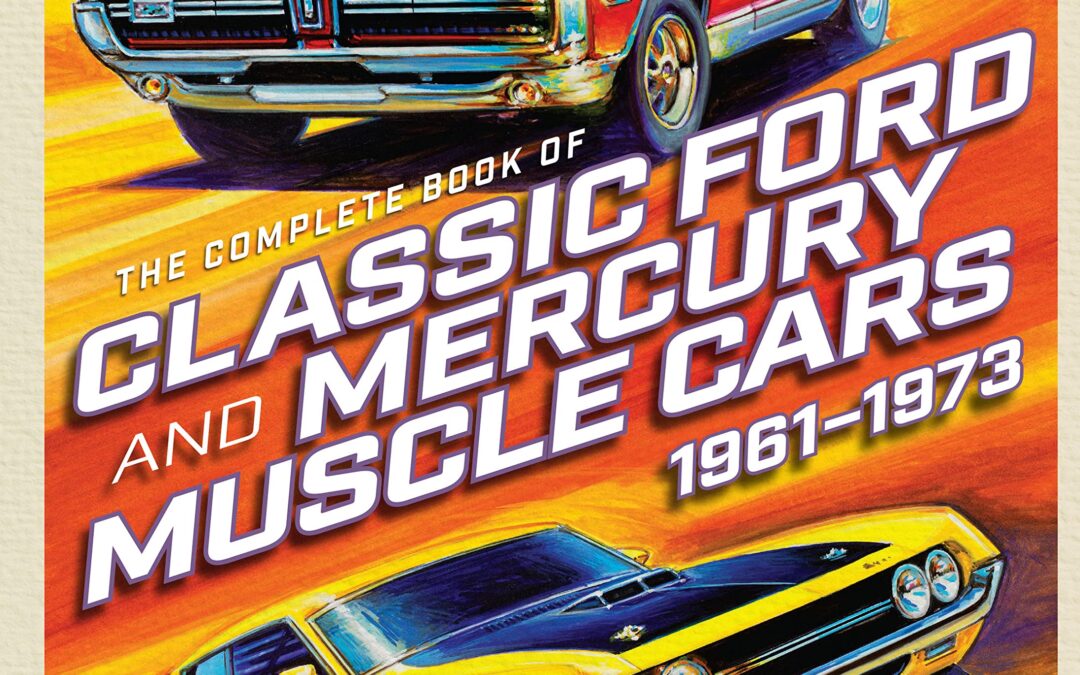
Take a stunningly illustrated and highly detailed tour through all of Ford Motor Company’s high-performance muscle cars from 1961 to 1970.
Though the Mustang remains Ford’s most famous muscle car, the company had been building muscle cars since it introduced the sleek Fairlane and Galaxie models with optional 390 cubic-inch big-block V-8 engines in 1961.
These cars were part of Ford’s Total Performance program, which tested cars in the crucible of racing at drag strips, oval circuits, European rally events, and road courses, resulting in legendary muscle cars like the Shelby Mustang, Boss 302 and 429 Mustangs, Mercury Cougar, Cyclone GT, and Spoiler.
The Complete Book of Classic Ford and Mercury Muscle Cars profiles every muscle car Ford produced during this exciting time in American automotive history. This comprehensive volume includes:
Detailed profiles of every Ford muscle car produced from 1961 to 1970, including specs for each
- Expert commentary by celebrated Mustang author Donald Farr
- Stunning modern and archival photography showcasing the cars and their engines
- Period advertisements that give a peek into the cultural era they were created in
This is the bible of muscle every disciple of Ford performance needs.
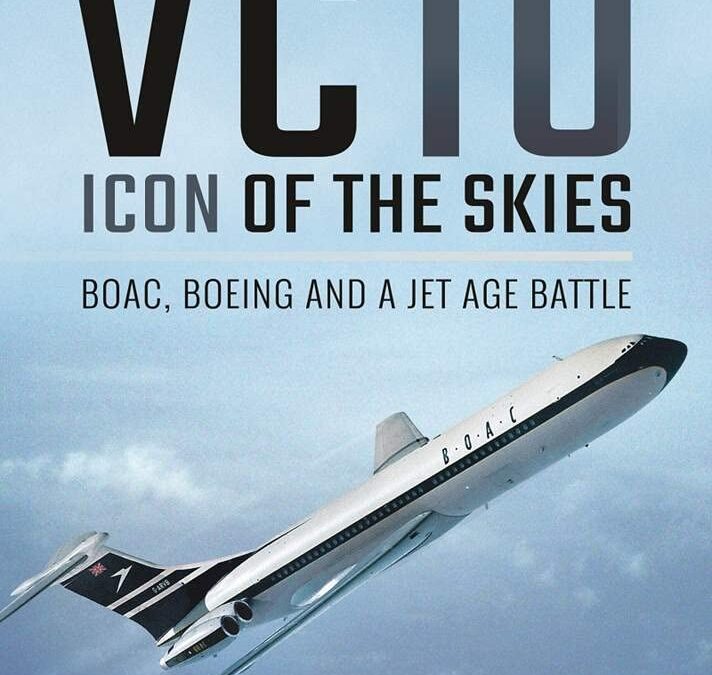
Other books have charted the VC10 in airline life, but this book blends that story with a well-researched tale of corporate and political power play. It asks; just what lay behind the sales failure of the VC1O?
Politics played an important part of course, as did BOAC’s tactics, and a ’who dunnit’ cast of politico-corporate events and machinations at the highest level of society during the dying days of Empire in 1960s Britain. Key players in the story, from Tony Benn to famous test pilot Brian Trubshaw (Concorde), are cited and quoted.
The VC10 was the nation’s biggest jet airliner of its age and regarded as the world’s best looking airliner. It was safe, fast, and designed to take off from short runways in Africa and Asia, at the request of its main operator BOAC – the airline that would later go on to become today’s British Airways.
The VC10 and the larger Super VC10 were beloved by pilots and passengers alike and became icons of the 1960s. They were hugely popular all over the world; East African Airlines made its name with Super VC10s, and so too did Freddie Laker with his famed VC10 fleet.
Yet the VC10 was eclipsed by Boeing’s 707 which sold by the hundreds, despite the fact that the 707 was less capable and could not initially operate from the runways of the Commonwealth and old British Empire routes, as the VC10 undoubtedly could.
The men of the Vickers Company who created the VC10 would later go on to engineer Concorde and, of course, the rest is history. But the era of the VC10 was pivotal and, by exploring this historical period in depth and highlighting all the various impediments that stood in the way of success for the VC10, Lance Cole adds an important layer to our understanding of twentieth century history.
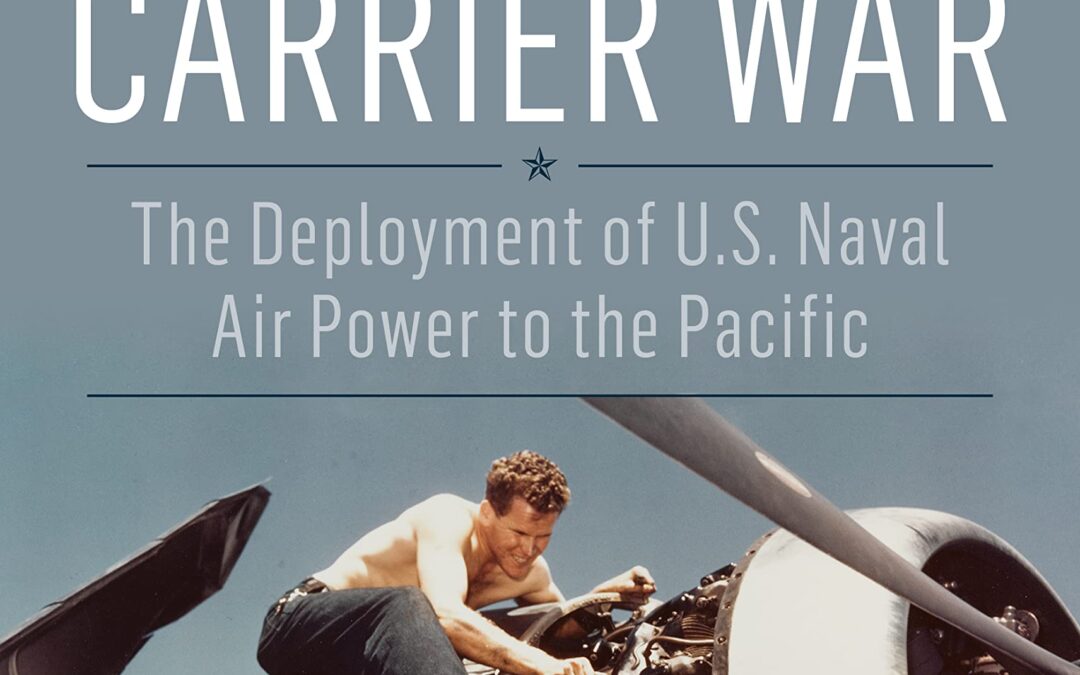
The ability of the United States Navy to fight and win a protracted war in the Pacific was not solely the result of technology, tactics, or leadership. Naval aviation maintenance played a major role in the U.S. victory over Japan in the second World War. The naval war against Japan did not achieve sustained success until enough aircraft technicians were available to support the high tempo of aviation operations that fast carrier task force doctrine demanded. When the United States realized war was imminent and ordered a drastic increase in the size of its aviation fleet, the Navy was forced to reconsider its earlier practices and develop new policies in maintenance, supply, and technical training. Not only did a shortage of technicians plague the Navy, but the scarcity of aviation supply and repair facilities in the Pacific soon caused panic in Washington. While the surface Navy’s modernization of at-sea replenishment was beneficial, it did not solve the problems of sustaining war-time aircraft readiness levels sufficient to a winning a naval air war. Fisher outlines the drastic institutional changes that accompanied an increase in aviation maintenance personnel from fewer than 10,000 to nearly 250,000 bluejackets, the complete restructuring of the naval aviation technical educational system, and the development of a highly skilled labor force. The first comprehensive study on the importance of aircraft maintenance and the aircraft technician in the age of the aircraft carrier, Sustaining the Carrier War, provides the missing link to our understanding of Great Power conflict at sea.

As World War II drew to a close, America’s premier fire apparatus builder–the American-LaFrance Foamite Corp. of Elmira, N.Y.–bet the company’s future on its radical new cab-ahead-of-engine 700 Series fire engines. In a spectacular gamble to capture the superheated postwar market, all of the company’s existing products were discontinued and its customers were essentially told to “take it or leave it.” This bold gamble paid off and 700 Series rigs soon filled firehouses across the nation, sweeping aside all competitors and ultimately defining the breakthrough 700 as “America’s Fire Engine.” This is the first comprehensive history of the game-changing 700. Individual chapters detail not only each of the eight major vehicle types but also the origins, design controversies, manufacturing, and marketing of the 700 and short-lived transitional 800 Series. The book includes a meticulously researched registry of every 700/800 series apparatus delivered, supported by many interpretive tables detailing production, specifications and major fire department fleets.
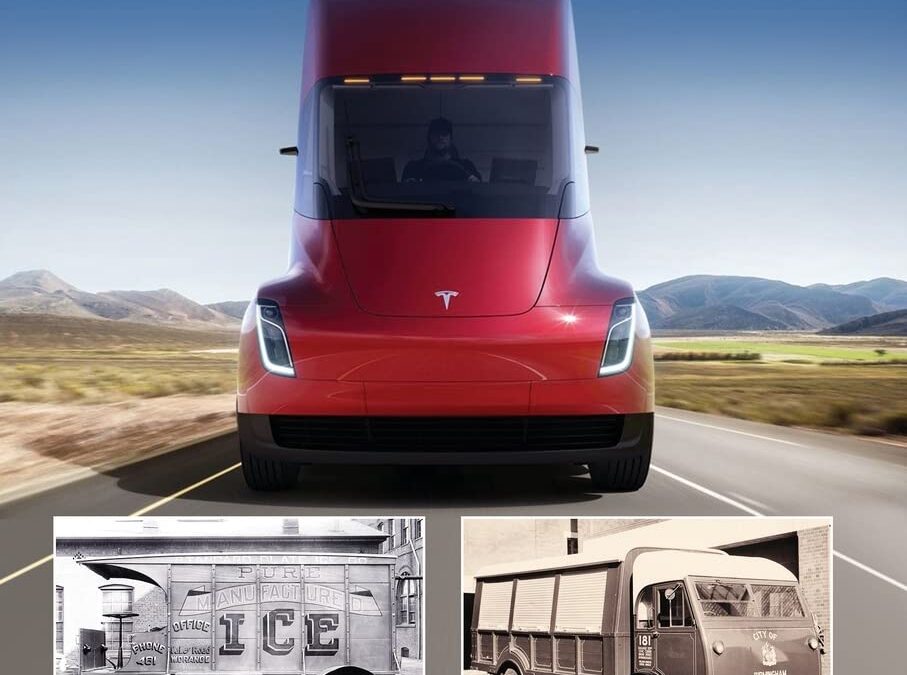
Welcomed at end of the 19th century as the solution to the severe problem of horse manure in city streets, electric trucks soon became the norm for short-haul commercial deliveries. Though reliable, they were gradually replaced by gasoline-powered trucks for long-haul deliveries–although a fleet of electric milk trucks survived in Great Britain into the 1960s. Industrial electric vehicles never disappeared from factories and ports. During the past decade, with the availability of the lithium-ion battery, the electric truck is back on the road for all payloads and all distances. The fourth in a series covering the history and future of electric transport, this book chronicles the work of the innovative engineers who perfected e-trucks large and small.
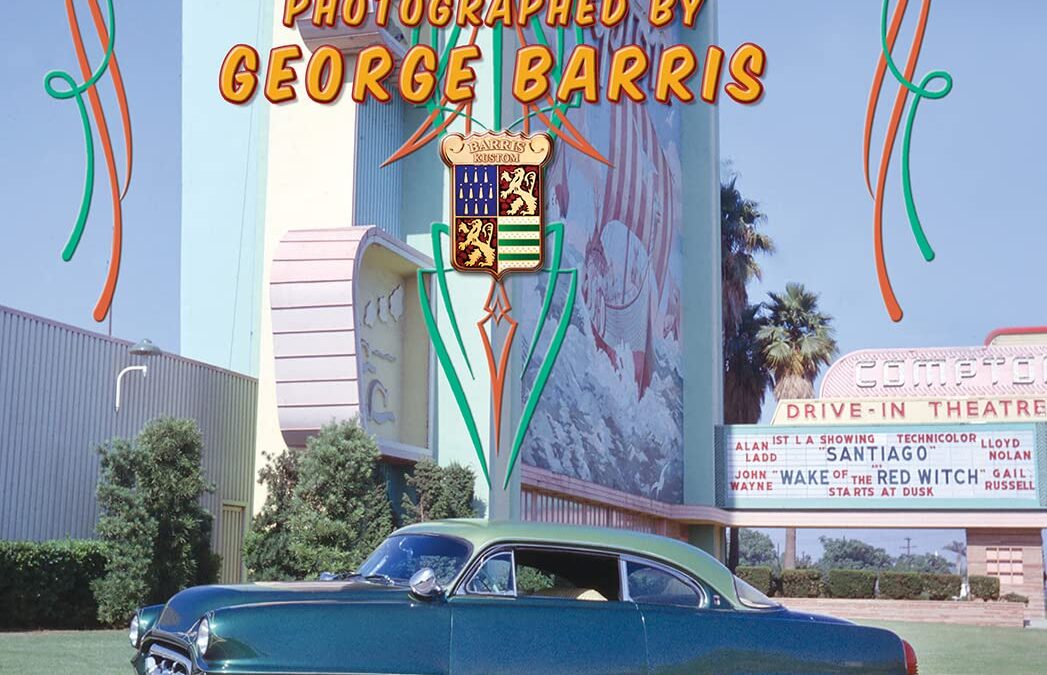
George Barris is indisputably the “King of the Kustomizers,” the most phenomenal kustom car builder ever.
This book collects the incredible photos of early hot rods and custom cars taken by George Barris in the 1950s to early ’60s.
As a sculptor of cars, George Barris knew well the angles and lighting that would bring out the beauty of these creations, both his own and those of others.
A treasury of images, the photographs in this volume capture the early parts of the kustom culture movement, when people wanted to stylize their cars and make them look more sleek, different, powerful and personal.
Early Hot Rod and Kustom Kulture features hundreds of photos including notable customizers from all over the country, in addition to Barris’ own creations. Many of these unique photographs have never been seen before. Barris also photographed the people and personalities of this iconic time, capturing builders and owners, as well as pinups and models.
George captured all the styles of the early era of customs and hot rods, both East Coast and West Coast, reflecting the wide range of trends and scenes. A beautiful collection seen through the lens of master customizer George Barris.
Kustom Photography
George Barris began making custom cars in the early 1940s with his brother Sam. George bought a German-made twin lens reflex Rolleiflex camera and began photographing cars as a way to promote his business. It then became a way to educate other kustomizers. George recorded and wrote how-to stories offering information and photos on kustomizing techniques, sharing his work as well as that of other builders from all over the country. George captured thousands upon thousands of moments in time when the beauty, style or sheer outrageousness of an automobile was visible only to a gathered crowd.
George Barris’ artful documentation of early car culture serves as an important chronicle of custom car history, capturing the best the best of burgeoning hot rod and kustom kulture.
His first work to appear in print was virtually concurrent with the beginning of auto enthusiast magazines known as “little pages” such as Hot Rod, Car Craft, Custom Cars, Hop up, Rod & Custom, Motor Life, Spotlite and others. Although much of his fame surrounds the incredible kustom cars he built, George’s endeavors as a photographer are just as important as any other facet of his life.
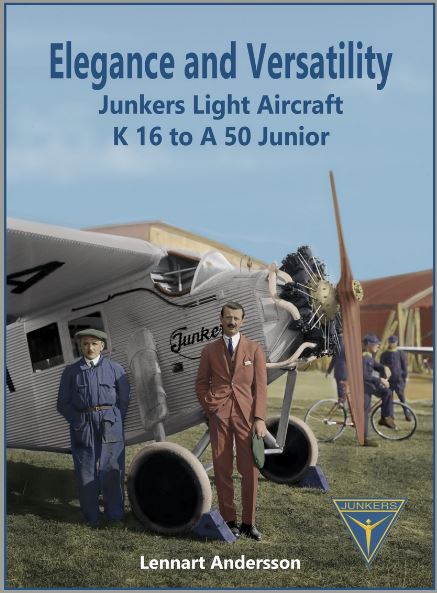
This book is about all the smaller Junkers types that were designed and built during the same period as the more well-known F 13, G 24 and W 33/W 34. The A 20 and A 35/K 53 were produced in great numbers and served in countries all over the world. The majority were of the military version, but the A 20 was also used for pioneering night airmail services.
The two-seat H 21 and the single-seat S 22 fighter were built for the Soviet Union. The K 47 two-seat fighter was sold to China and was used in dive-bombing experiments and the A 50 Junior was intended for the emerging private aircraft owner market. Junkers built substantial numbers of the Junior and they and found buyers in all corners of the world. It became world famous especially for daring long-distance flights made by illustrious aviators, including female pilots.
Contents:
Introduction
For Travellers in Style – The Junkers K 16
Two-Seaters for Private Flying and Training – The Junkers T Series
Civil and Military Use – The Junkers A 20 and Derivatives
Specially Made for the Red Air Fleet – The Junkers J 21 and J 22
Two-seat Fighter and ‘Stuka’ – The Junkers K 47
The Private Aircraft Owners Dream – The Junkers A 50 Junior
Specifications and Performance
Drawings
Sources and Bibliography
Index
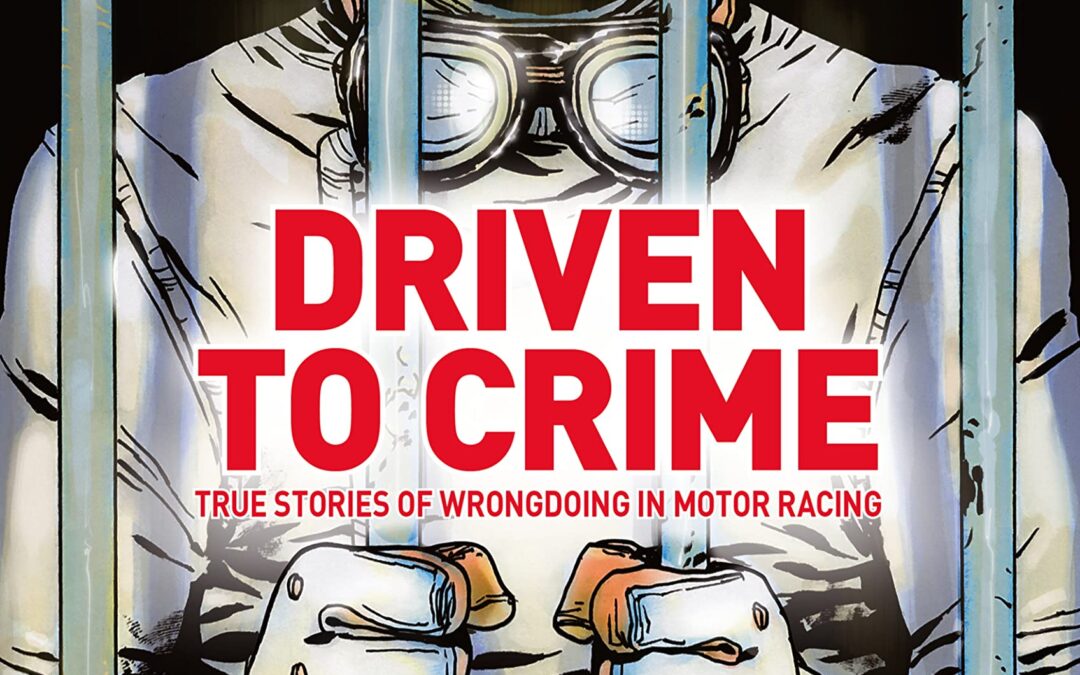
People lie, cheat, steal and even kill for a variety of reasons, one of which is to go motor racing, a particularly expensive and egotistical sport. This intriguing book, the result of years of research, encompasses not just those who have been ‘driven to crime’ in order to pay for their sport but also characters within motor racing who have been involved in wrongdoing, sometimes through no fault of their own.
Over 60 true stories cover webs of deceit and numerous crimes including drug trafficking, corruption, embezzlement, robbery, fraud, murder and money laundering. The author investigates misdemeanours at all levels, from drivers, designers and mechanics to team owners, entrants and sponsors.
- Stories of motorsport chicanery from all over the world, including…
- Fraud: Southern Organs (lay preachers who faked suicide and hid on a remote Scottish island); Jerry Dominelli (a Ponzi scheme that funded top-level racing Porsches); Jean-Pierre Van Rossem (self-styled stock-market guru who bankrolled an F1 team); Dominic Chappell (serial bankrupt racer brought down after purchasing a British department store); David Thieme (the Lotus sponsor who vanished).
- Murder: David Blakely (the driver killed by his lover Ruth Ellis); Franco Ambrosio (F1 sponsor of Shadow and Arrows); Elmer George (American racer who married into Indy ‘royalty’); Ricardo Londoño-Bridge (Colombia’s first F1 driver); Mickey Thompson (1960s American drag-racing icon); Nick Whiting (casualty of the biggest gold bullion heist in British history).
- Swindles: James Munroe (accounts manager who embezzled his way to a racing McLaren F1 GTR); Lord Brocket (jailed for staging the theft of his classic cars, including Ferraris); Andrea Harkness (stripper who ripped off NASCAR).
- Drugs: Ian Burgess (sometime British F1 racer); Randy Lanier (drug-smuggling IMSA champion); John Paul Sr and Jr (talented son dragged into a racing father’s drug-running); Vic Lee (super-successful team owner with a dodgy transporter); the Whittington brothers (more misdeeds in IMSA circles).
- Other misdemeanours: Roy James (Great Train Robbery getaway driver); Bertrand Gachot (jailed after road rage in London); Juan Manuel Fangio (kidnapped by Cuban rebels in 1958); Colin Chapman (the unresolved ‘DeLorean Affair’); ‘Spygate’ (Ferrari design secrets passed to McLaren).
This book will appeal not only to motor racing enthusiasts and cognoscenti on both sides of the Atlantic but also to anyone who enjoys reading about true crimes.

Journallist and broadcaster Andrew Marriott writes with a light and humorous touch about a multi-faceted career covering some six decades.
He reckons he was the youngest ever person to report a Formula 1 race for a national publication and now the oldest person to regularly report from the pit lanes of Le Mans, Daytona and Silverstone.
He has covered every aspect of car and bike racing from Formula 1 to NASCAR as well as World Championship motorcycle racing plus inshore and offshore powerboat racing. Along the way he has interviewed thousands of competitors and, indeed, show business personalities . He says that he has interviewed or worked with every Formula 1 World Champion bar Farina, Ascari and Hawthorn.
He has been driven across Buenos Aires by Fangio, starred in a hilarious TV blooper episode with Mario Andretti, judged competitions with James Hunt, provided a flat floor for Jody Scheckter to sleep on, played charades with Jochen Rindt, persuaded Denny Hulme to go truck racing, covered up for Alan Jones after an altercation with a van driver and door-stepped Alain Prost as he came out of a Monaco portaloo. Ayrton Senna secretly signed his Lotus contract in front of Andrew but subsequently stood him up when the Brazilian decided that taking a ride in F16 jet was a better option than a Marriott interview.
Add to that ghosting road tests and much more from motor cycle world champion Barry Sheene, working with George Harrison on a sponsorship deal and for 25 years interviewing the Le Mans 24 Hour winners at the end of the great race. He says he is not sure how many times he has covered the French classic but at least 50 and he has worked at over 130 different race tracks. He came up with the idea of a feature film about Steve McQueen which premiered at the Cannes Film Festival and is currently working on a follow-up.
Add to this a career in sports management and sponsorship embracing such events as the Hong Kong-Beijing Rally, various major Truck Races and the Birmingham Superprix. He has launched racing cars everywhere from London’s Albert Hall to a former carpet warehouse in Didcot. Add to that a brief career as a rally co-driver which included winning internationals in South Africa and the UK and finishing up stuck in a mud hole in Paraguay.
So he has plenty to write about and he says he has enjoyed nearly all of it all but as the title suggests – Is There Much More of This?
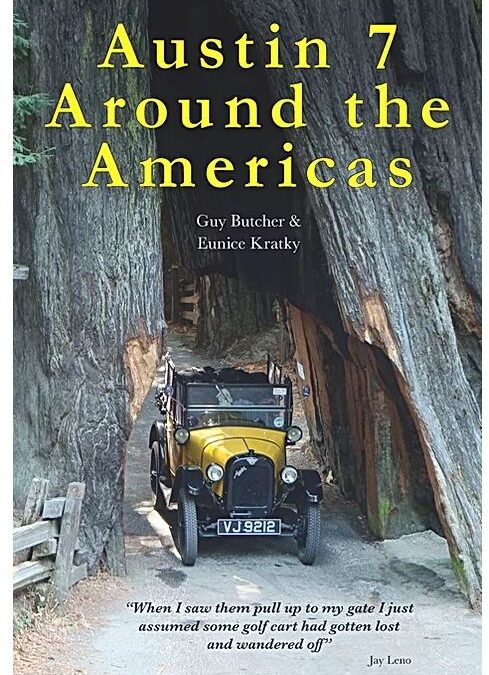
SIGNED BY THE AUTHORS
Here is the story about a dream, a dream that first appeared soon after buying the first of many Austin 7’s in 1966.
Inspired by Tschiffely’s Ride (Buenos AIres to New York in 1925 with horses and mules), Coleman’s Drive (Buenos Aires to New York in a 1925 Austin 7, 1959-60) and Austins over the Andes by Vince Leek.
It tells of the designing, building and planning of the journey from Baltimore to Alaska and onto Punta Arenas in a 1936/28 Austin 7 during 2012/13 by the Authors. It takes the form of a diary:
Eunice wrote a blog on the website and Guy used Facebook as a daily record.
To reflect on the immense generosity of the many people without whom this would never have happened ALL the proceeds of the sales of the book are being donated to Dame Hannah Rogers Trust (www.discoverhannahs.org).
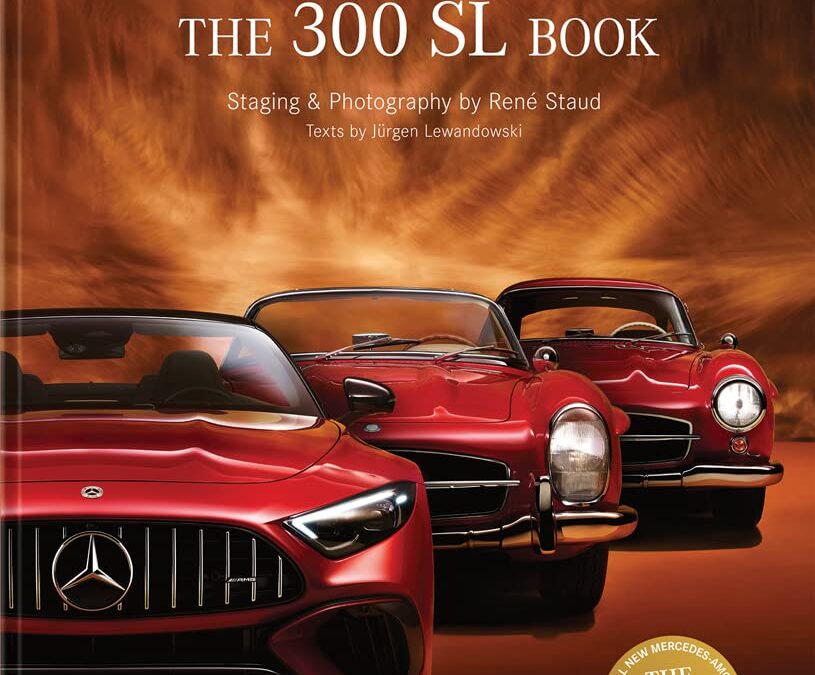
- The completely revised bestseller by René Staud and Jürgen Lewandowski in a 70th Anniversary Edition
- An inspiring and must-have treasure trove for all fans of the “sports car of the century”
- Photographer René Staud and author Jürgen Lewandowski are synonymous with expertise of the highest caliber when it comes to automobiles
This iconic sports car, from the first Mercedes 300 SL to its latest successors, proves that technology can indeed evolve into art. And who better to showcase this procession of pioneering automobiles than René Staud, whose striking photographs will captivate any enthusiast. This book, based on Staud’s successful calendars, is an ode to an extraordinary vehicle whose spell stars such as Grace Kelly, Frank Sinatra and Alfred Hitchcock have all fallen under. The elaborately orchestrated pictures show sleek curves and precision in every detail, conveying the passion for this breathtaking automobile. A photographic tribute to the “sports car of the century”, covering the 70-year history of the 300 SL racing car models from 1952 to the latest SL generation.
Text in English, German, and French.
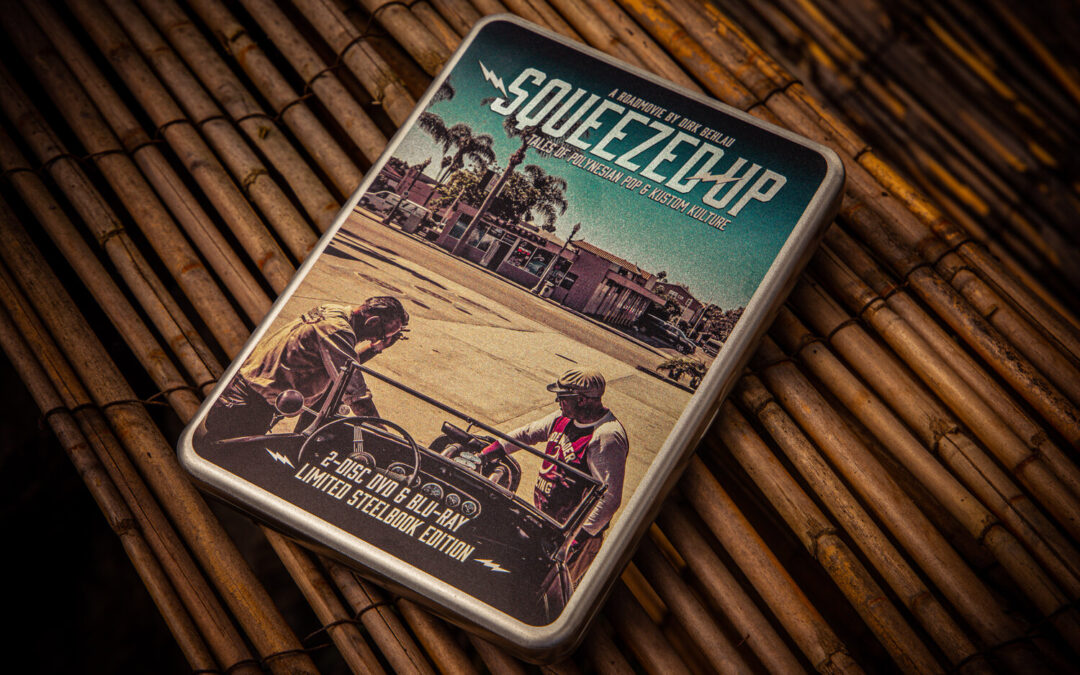
Companion to Squeezed Up – The Book
80 Minutes full-feature film
Filmed by: Dirk “The Pixeleye” Behlau
Executive Producer: Stefan Immke, Co-Producer: Shane Bagnall
Director of Photography: Dirk Behlau
Narrated by: Jessica Behlau
Edited by: Dirk Behlau
Language: English
Soundmix by: Thomas Geiger
Starring: “The Wild Bunch“
Stefan Immke, Matze Heiden, Thorsten Liesenberg, Andy Schmidt & Shane Bagnall
also starring in no particular order:
Robert Williams, Brian Bent, Tiki Tony, Dave Warshaw, Bamboo Ben, Fip Buchanan, Jay Dean, Jason Lee, Bobby Green, Shige, Matt “Tikiman” Willis, Marie Devilreux, Wild Tiger Woman, Spike Marble, Joe Arreguin, Adrian Eustaquio, David Arnson, Crazy Al, Michael Grider, Billy Shire, Dottie Deville & many more
Music by The Insect Surfers, Jason Lee, Brian Bent & The Hula Girls
DVD and Blu-Ray – two discs with the same movie! Codefree
Squeezed Up the Book HERE

A book dedicated to a true milestone in the history of the Innocenti scooter: “Scooterlinea 1962”, a thoroughly revised Lambretta that was a protagonist on the worldwide scooter scene of the Sixties.
Technically known as the “Series III”, the new Lambretta was launched late in 1961, initially with the two 125 and 150 cc displacements, later joined by the 175 TV in the spring of 1962.
The third title in the series dedicated to the most important Lambrettas (which include the Lambretta Lui and the Lambretta TV/LI Series I), celebrates a model characterised by sleek and aggressive bodywork and equipped with a front disc brake and an extremely high level of fittings and finish. Written by Vittorio Tessera, the leading Lambretta historian, the book reviews the complete industrial, technical and social history of the Scooterlinea, drawing on hundreds of previously unpublished contemporary photos in black and white and colour.
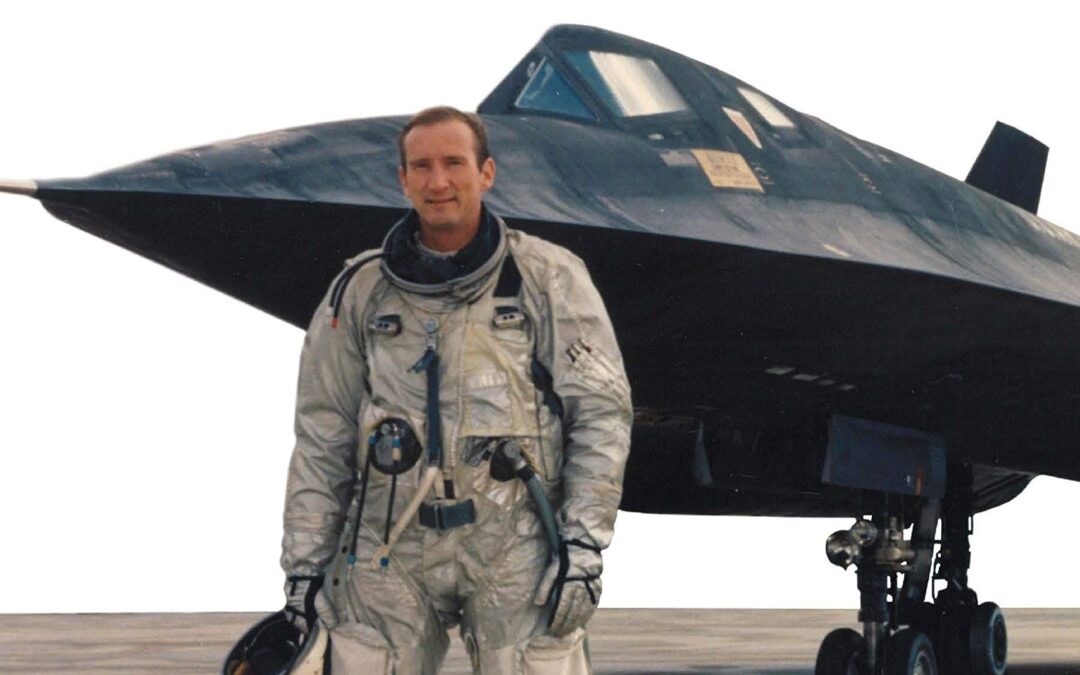
On December 22, 1964, at a small, closely guarded airstrip in the desert town of Palmdale, California, Lockheed test pilot Bob Gilliland stepped into a strange-looking aircraft and roared into aviation history.
Developed at the super-secret Skunk Works, the SR-71 Blackbird was a technological marvel. In fact, more than a half century later, the Mach 3–plus titanium wonder, designed by Clarence L. “Kelly” Johnson, remains the world’s fastest jet.
It took a test pilot with the right combination of intelligence, skill, and nerve to make the first flight of the SR-71, and the thirty-eight-year-old Gilliland had spent much of his life pushing the edge.
In Speed one of America’s greatest test pilots collaborates with acclaimed journalist Keith Dunnavant to tell his remarkable story: How he was pushed to excel by his demanding father. How a lucky envelope at the U.S. Naval Academy altered the trajectory of his life. How he talked his way into U.S. Air Force fighters at the dawn of the jet age, despite being told he was too tall. How he made the conscious decision to trade the security of the business world for the dangerous life of an experimental test pilot, including time at the clandestine base Area 51, working on the Central Intelligence Agency’s Oxcart program.
The narrative focuses most intently on Gilliland’s years as the chief test pilot of the SR-71, as he played a leading role in the development of the entire fleet of spy planes while surviving several emergencies that very nearly ended in disaster.
Waging the Cold War at 85,000 feet, the SR-71 became an unrivaled intelligence-gathering asset for the U.S. Air Force, invulnerable to enemy defenses for a quarter century.
Gilliland’s work with the SR-71 defined him, especially after the Cold War, when many of the secrets began to be revealed and the plane emerged from the shadows—not just as a tangible museum artifact but as an icon that burrowed deep into the national consciousness.
Like the Blackbird itself, Speed is a story animated by the power of ambition and risk-taking during the heady days of the American Century.
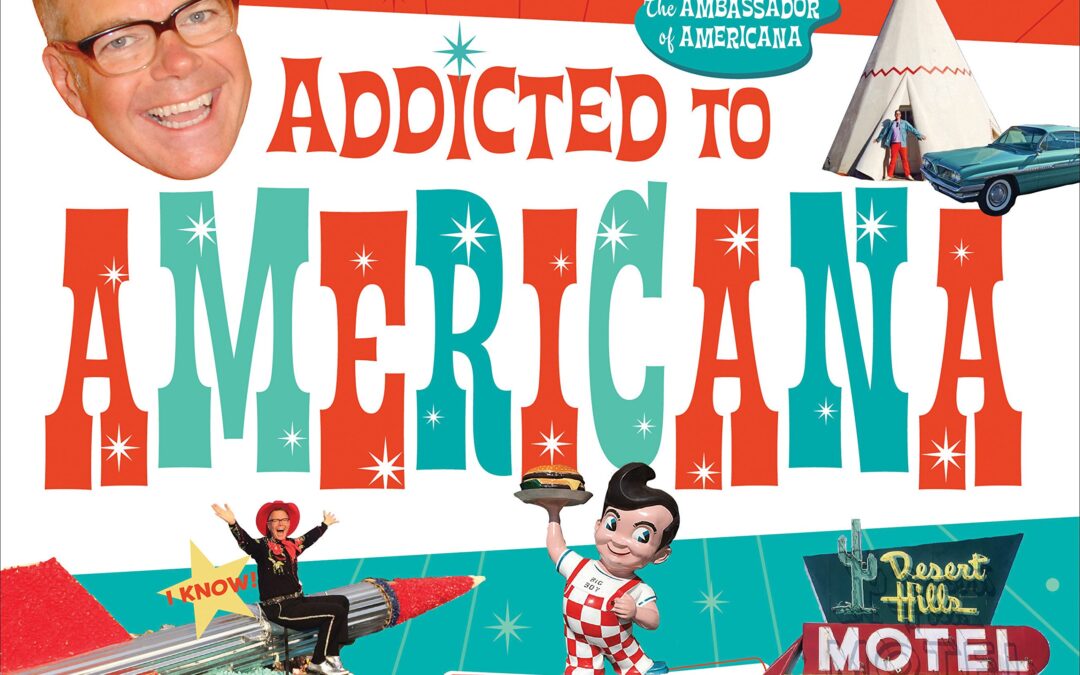
An adventure through the classic, the vintage, the kitsch, the nostalgic, and the fun of Americana culture guided by showman Charles Phoenix.
“Addicted to Americana…unfurls the most colorful, most creative, and most interesting facets of mid-twentieth century American culture in a joyful, exuberant way only [Charles Phoenix] can convey.”
― Bleep Mag
Raised on a used-car lot, Charles Phoenix was destined to become the Ambassador of Americana. The photo collector, food crafter, and field tripper is famed for his hilarious live show performances and “theme park” tour of downtown Los Angeles. This riotously colorful book, replete with Charles’s collection of vintage Kodachrome slides, celebrates his lifelong quest to unearth the best of classic and kitschy American life and style.

A Robb Report Best Coffee Table Book to Gift in 2020
A Sports Car News and InsideHook Best Coffee Table Book for Car Lovers
Celebrate That Special Bond Between Men and Cars, and the Stories That Connect Them
Discover actor and director Ed Burns talking about his 1969 Oldsmobile Cutlass Supreme, a model he’d been dreaming about since his days pumping gas. NBA legend Shaquille O’Neal, whose favorite cars are trucks—he loves the wow factor of an International CV Series 6.6. Or Jay Leno on his 1955 Buick Roadmaster, big enough for him to sleep in while trying to make it as a comic. Filled with stunning photographs of the whole cars and of the exquisite details that make car lovers’ hearts beat just a little faster, as well as more than 80 personal stories, it’s a joy for every reader who knows that a car is never just a car.
Hardcover in slipcase
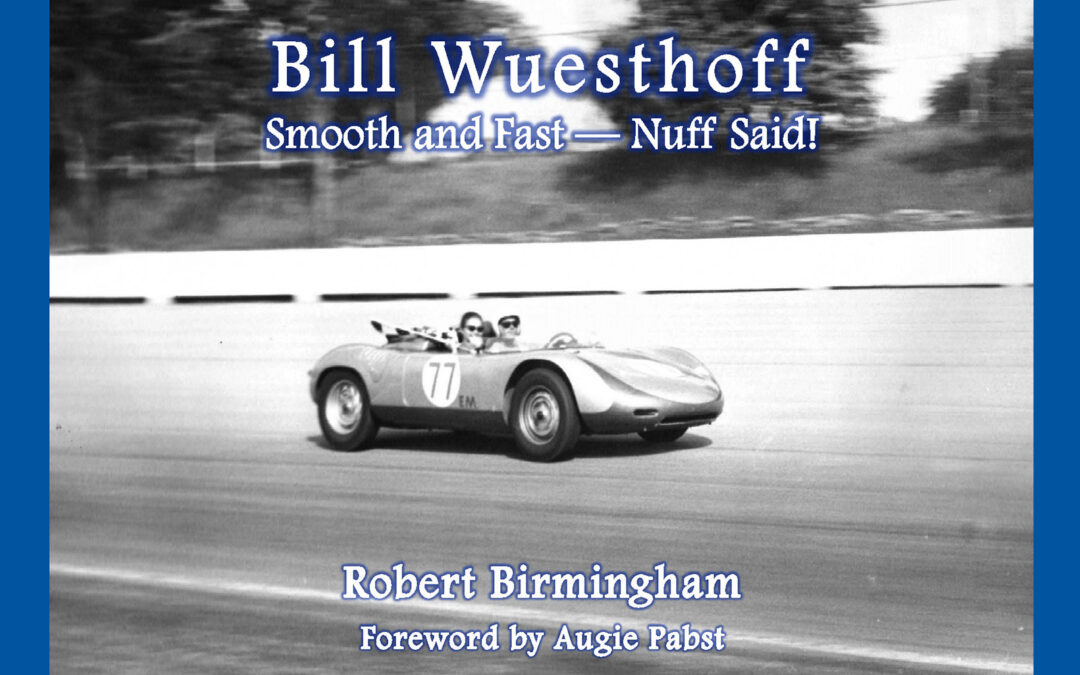
Bill Wuesthoff was among America’s best sports car racers beginning in the mid-1950s and culminating in 1964 after winning the United States Road Racing Championship, USRRC Under 2-liter title. Throughout his ten years competing, Bill kept a low profile as could be expected from someone who enjoyed the battle but shunned the spotlight.
Robert Birmingham’s personal relationship with Bill Wuesthoff dates back to 1959 and as much as anyone today, recalls Bill’s “smooth and fast” competitions from Sebring and Pensacola, Florida, Watkins Glen and Bridgehampton in the east, to Riverside, Laguna Seca, California and Continental Divide in Colorado out west and countless road-racing venues in between. Internationally, he competed at Mosport, Canada, at Nürburgring in Germany, and in Nassau for the popular yearend Speed Week series.
Bill enjoyed success co-driving with his long time close personal friend Augie Pabst, also with Harry Heuer, Chuck Dietrich, Jim Jeffords, Fred Gamble, Bruce Jennings, Frank Rand, and Joe Buzzetta, all nationally ranked competitors of that era. Team car owners included Heuer’s Meister Bräuser Scarab team, Luigi Chinetti’s North American Racing Team, Ollie Schmidt, Carl Haas, Camarodi USA, and Eddie Weschler.
A brief history of Bill’s relationship with to automobiles began at a very early age, stemming from his father who was an early Milwaukee Region SCCA member. Post-racing activities centered on automobiles, his professional business, and sons’ Karl and Lee’s ten years of highly competitive off-road racing.
Many never-before-published photographs, together with numerous documents and other race-related mementos, total over 150, along with Bill’s ten-year race history. In recent years, there has been a growing interest in the recovery of long-forgotten sports car events, tracks and of course, competitors of the 1950s and 1960s. Smooth and Fast, Nuff Said! will be a wonderful addition to any early motorsports collection.
Full color, hardcover coffee table book.

Car photography often evokes the same recycled tropes. Predictably slick, hi-spec images on the front pages of glossy magazines, or huge blow-ups on giant billboards which have one designed aim: to sell a lifestyle. But our relationship with cars is so much more meaningful than these images might suggest. Like the camera, the car has changed the way we explore the world. With cars came road trips, and with road trips came some of the most important photographic documentaries of our time. A car is a vehicle not just for transport but for our hopes, desires and dreams. In Smoke and Mirrors, a selection of world-renowned and up-and-coming photographers come together to pay tribute to the car. From Nick Turpin’s images of ‘donut’ skid marks, Todd Hido’s painterly landscapes taken through wet windscreens and William Green’s shots of sleeping Tokyo taxi drivers, these photographs display cars at their most playful, introspective and meaningful, reminding us that there is more to them than just metal and machinery – for cars are emotionally intertwined with the lives we live.






















